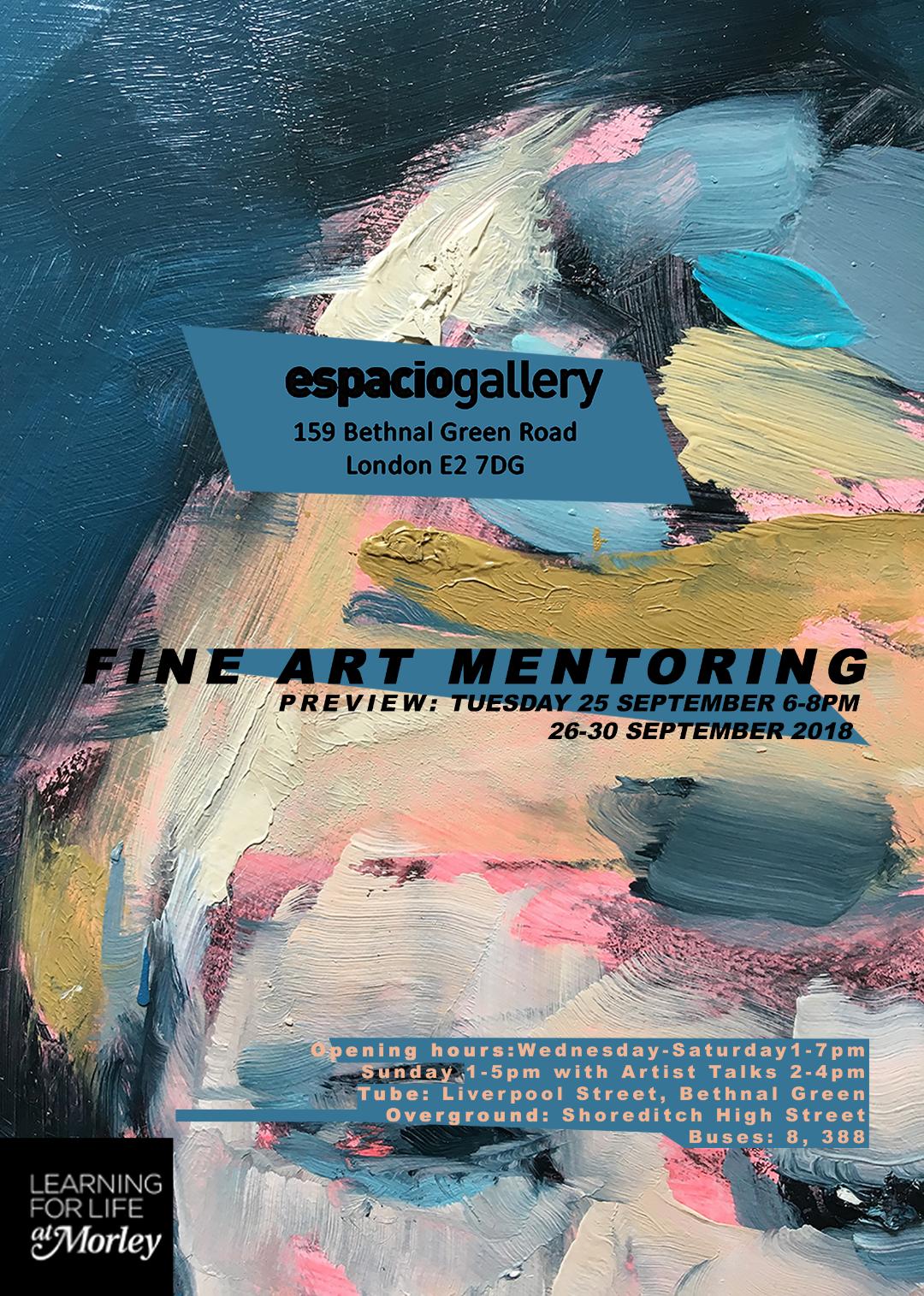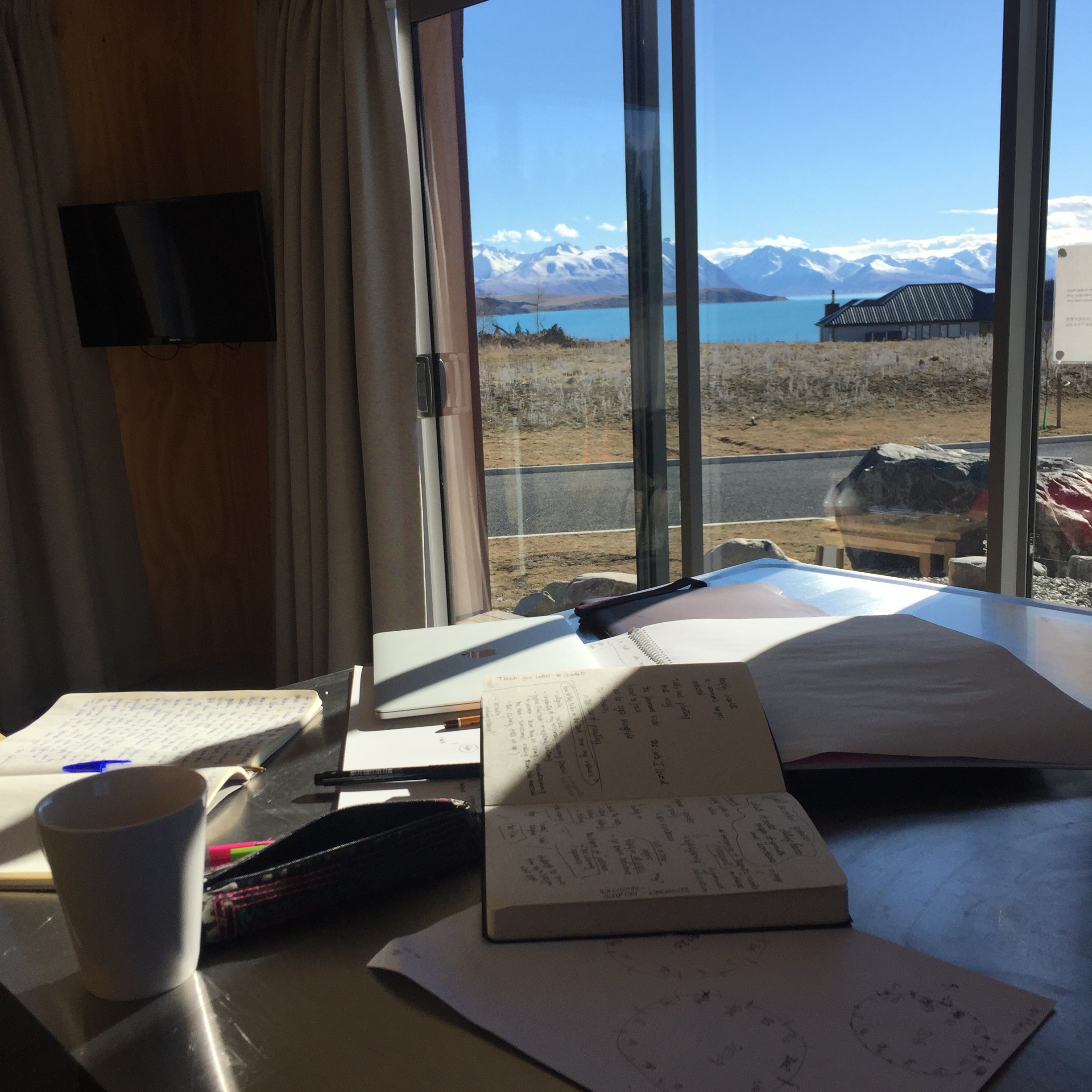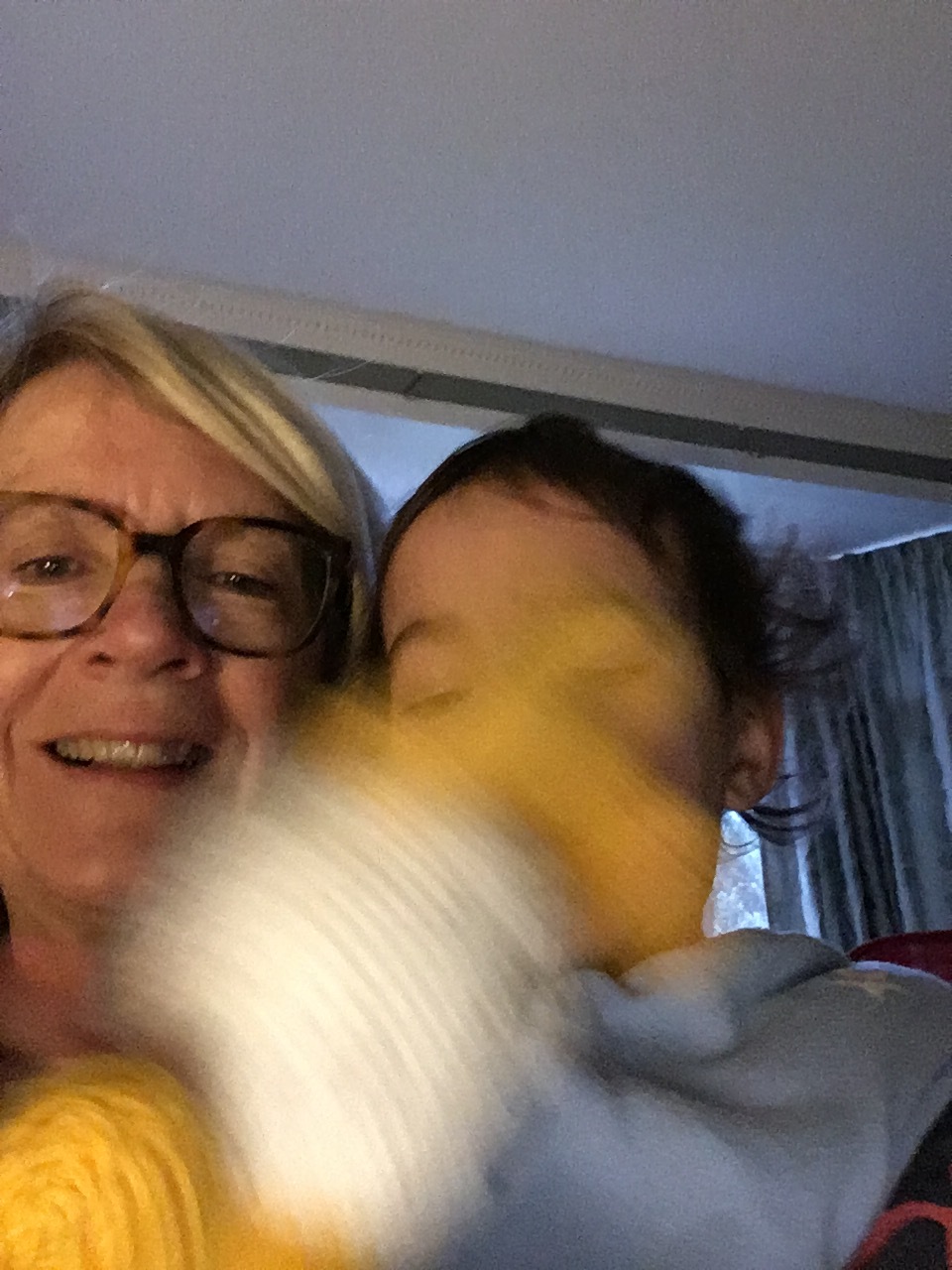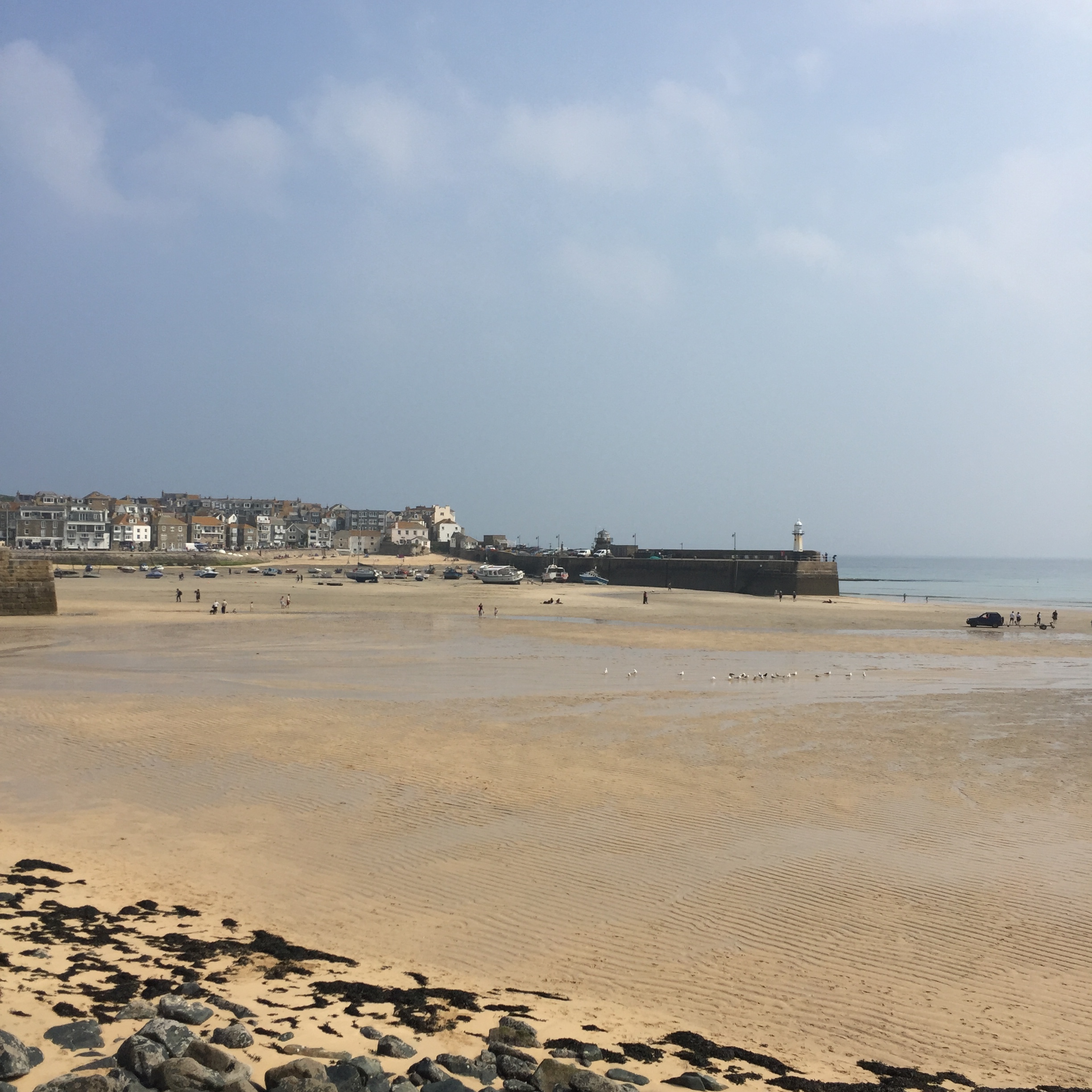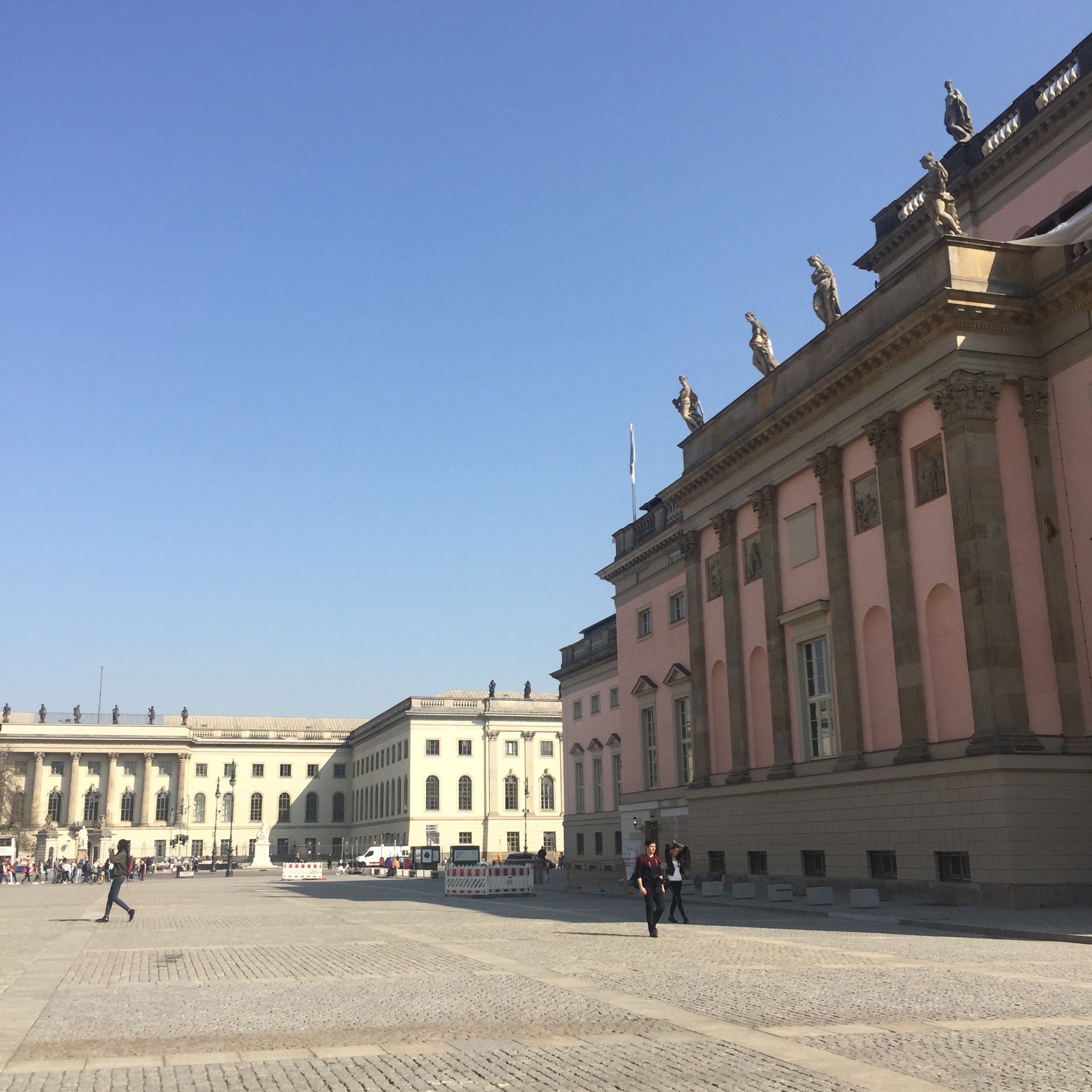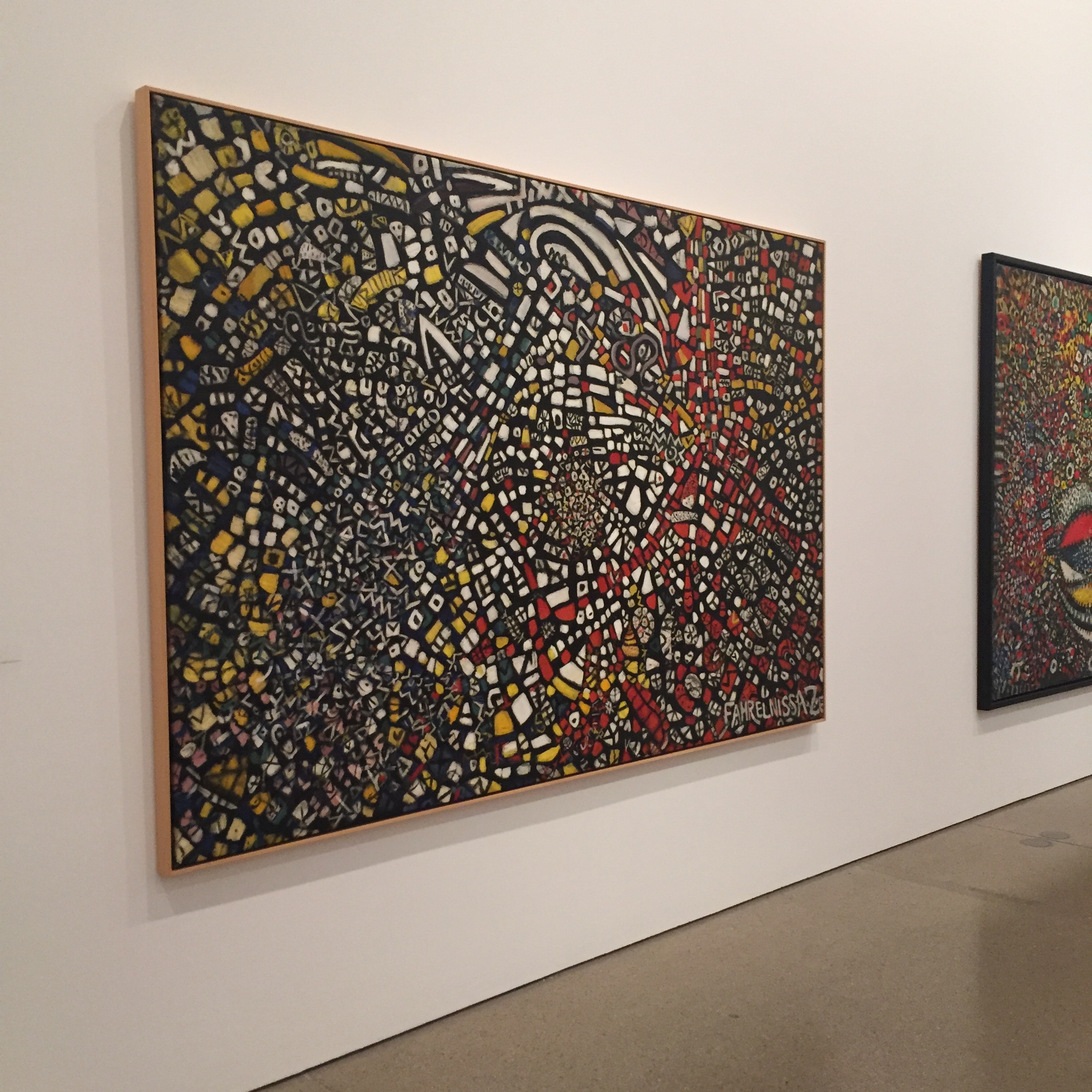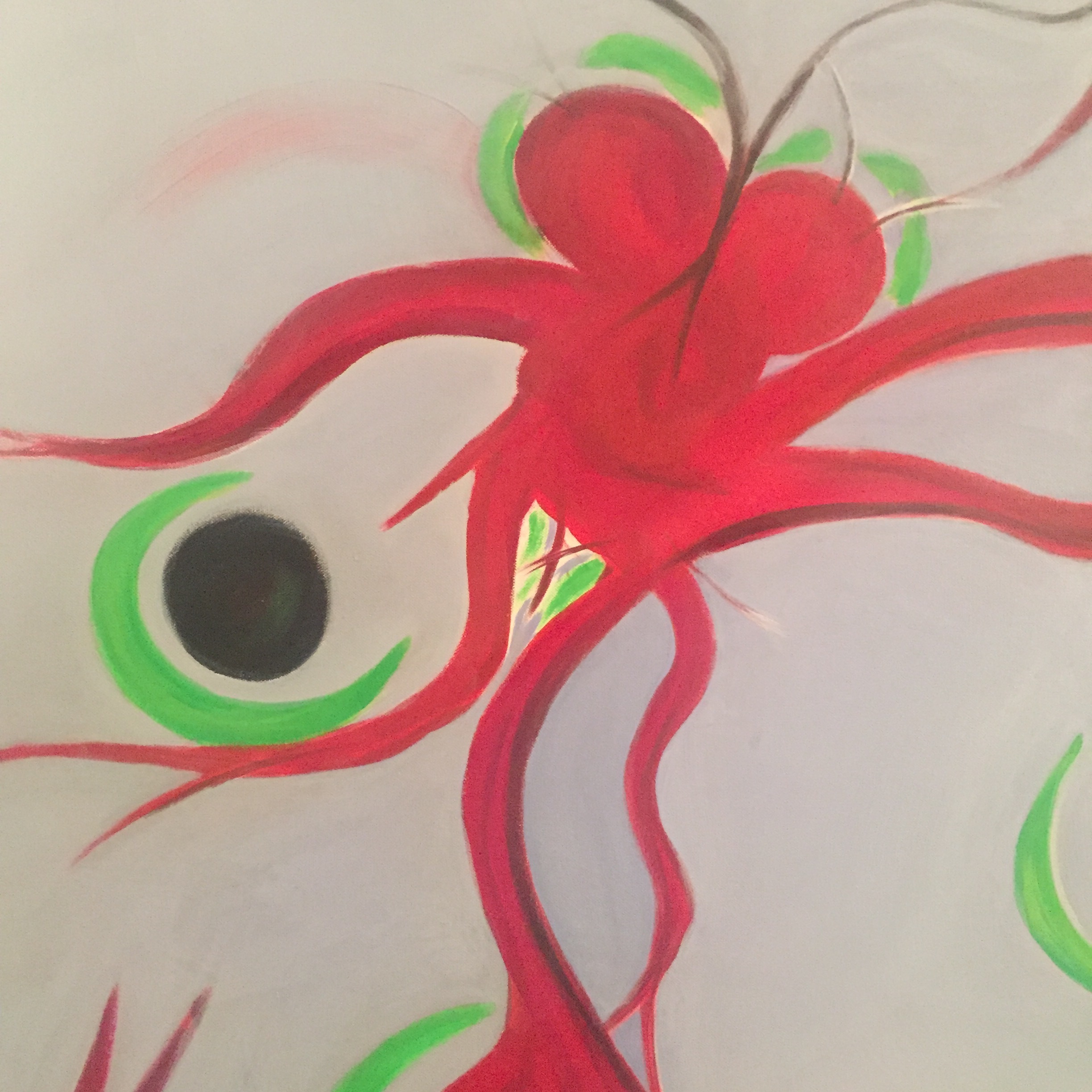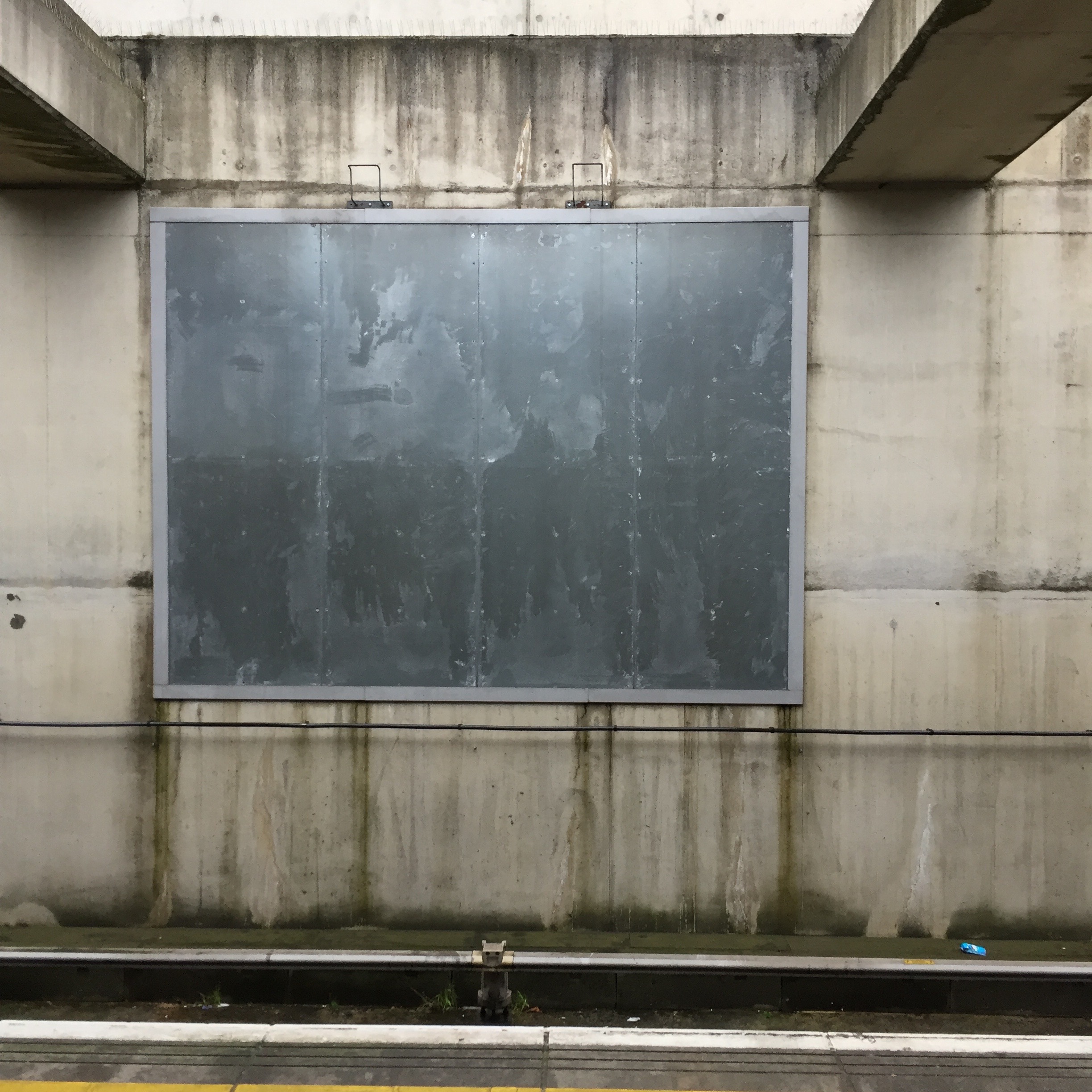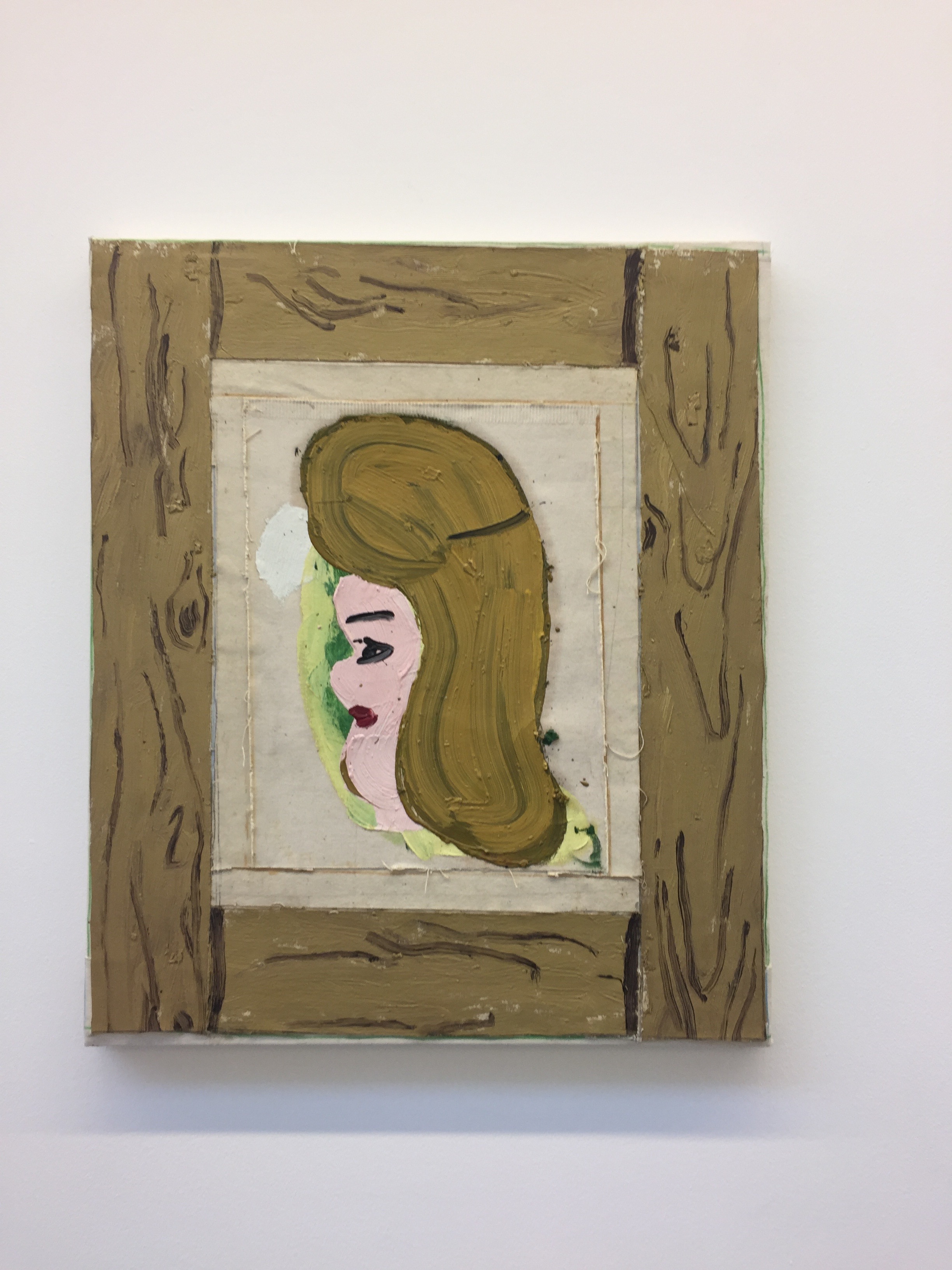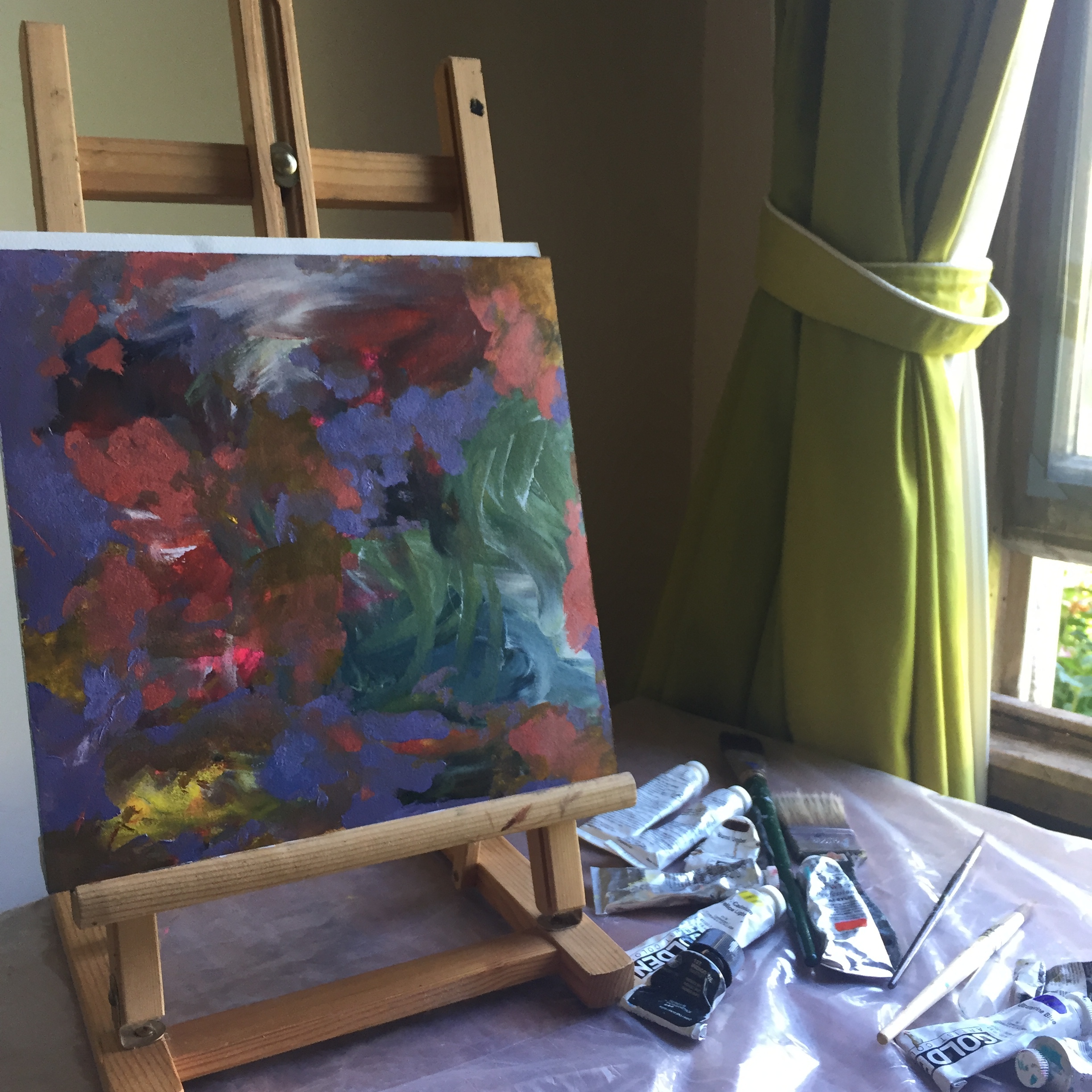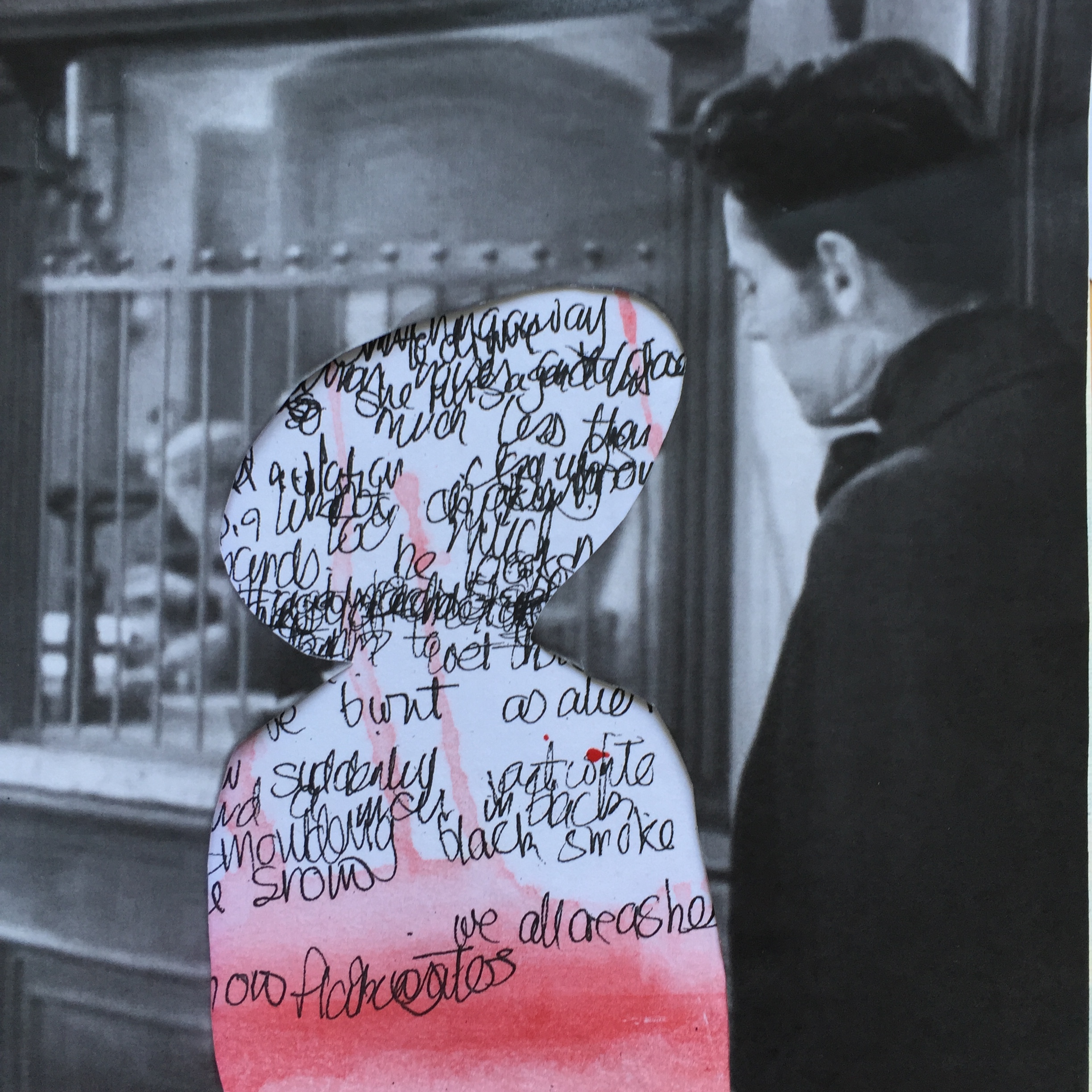At Espacio Gallery in Bethnal Green Road, just by the top end of Brick Lane. Preview 6-8 pm.
Travelling studio
My view this morning is stunning - a turquoise Lake Tekapo surrounded by snowy mountains in the South Island, New Zealand.
And I'm starting my day with studio time - reading, thinking, making notes, having ideas, looking at artworks and pondering what's next. Feeling inspired by the upcoming London exhibition and bringing together old and new work that reflects who I am and want to be as an artist.
ready for painting, a complex surface made of words
And so happy to have a snuggly little person to go back to in a few days ...
with fast moving rabbit...
A good weekend
it was, as it turned out, a really good Open Studio weekend. Over a hundred people came and some paintings were sold. Best of all, visitors took the time to look at the paintings and we had some great conversations - sharing my ideas is such an important part of being an artist for me.
Open studio anxiety
Will anyone come? Will there be enough cake? Do I really want to get out those old paintings? Does it look alright? Why am I doing this?
I am comforted by the presence of friends from Manchester and Cambridge who have made long journeys to be on the island this weekend. They’ve had a preview and given my display a thumbs up. It’s taken all week to sort the work, unpack and place it, write labels and statement. I’m using the event as a chance to review the work and spot possible new directions. If lots of eager visitors come, if some paintings and prints get sold, that will be a bonus.
Patrick Heron: the 1970s
On my first visit, I caught the brief tour of the exhibition run by the Tate St Ives. The next day I came back to sit with the paintings and look. Paintings from across his lifespan are mixed up so that you can see the threads across time. I love this presentation and it works particularly well for Heron who returned to what he loved - colour, gardens, Cornwall landscapes - while consciously developing his techniques and style through involvement in French and US art.
I sat with the huge, solid colour abstracts of the 1970s. Left below is “Two reds with emerald fragment” (1977) and right is “Big complex diagonal with emerald and reds” (1974). Descriptive rather than poetic titles...
The edges where reds meet green really sizzle - my eyes were drawn to them and then moved away because it nearly hurt to look. The shapes of colour reminded me of cut-outs, and the negative spaces in photographs that remain after cutting out. He balanced the shapes as he painted.
The colour looks solid from a distance, and each is indeed just one pigment and tone. But there is texture in the surface and the edges are not hard. He called them “wobbly hard edges”. The edges of the canvas too are wobbly with small areas of the white canvas showing along the edge. The paint was applied, all over, with a small brush, ensuring the process remains visible in the product.
Tate St Ives
As well as the Patrick Heron exhibition, of which more soon, I’m delighted to find the Tate St Ives now features work by artists who painted here. It was hard to believe when I came years back that they didn’t!
And I was surprised to meet an artist I had first encountered in New Zealand - Frances Hodgkins. She rented a studio here from 1914 - 1920. Imagine what else was going on in those years...
Looking
I’ve come to Cornwall because I wanted to see Heron’s paintings in the flesh. Or on the wall.
Yesterday I sat on the beach and did the short tour offered by the Tate St Ives. I’m off back again with sketchbook and pen to look and learn.
Back to Berlin
For a short working visit
The Opera House (on the right) has been restored and is visible again, quietly and grandly pink.
Deutschland Bank Gallery- last day of Fahrelnissa Zein, Turkish woman artist who worked in London and Paris, travelling between studios (now there’s an idea..)
Remembering to wait for the green Ampelmann in an empty street
April arrives
with sunshine and celandines.
It’s been a long, cold winter, with plenty of snow. And more forecast tomorrow. Amazing gentle colours when it’s freezing...
looking out to Loch Quien acrylic on canvas, 16 x 12” Lynne Cameron 2018
Thanking the women who changed things
I’ve been painting a new large (100 x 100cm) canvas. It’s the ‘daughter’ of a tiny Thank You Letter.
After a layer of writing, the paint started with a layer of subversive fluorescent pink. Then came the solid rich reds and blues, and waving green curves. Some unexpected bird-ish shapes.
wow! It is strong. I’ve had friends tell me they find one or other of my paintings ‘too much’ but this is the first time I’ve thought that myself.
I woke this morning thinking about it:
“I could calm it down with white. I could take out some of the strong shapes. I could control that corner with a line. Tone it down. Make it quieter. Stop it shouting so much. Introduce some order.”
Then I realised - this is a Thank You Letter to Simone de Beauvoir, and I’m planning how to reduce and silence its voice! On International Women’s Day! So wrong...
Any changes will be about the integrity of the work.
Another mother
Here they come! acrylic on canvas, 60 x 60 cm Lynne Cameron , 2016 . nfs
this picture produced two generations of daughters... Can you spot the starting point, quite close to the centre. The blue 'cloud' came along to balance the composition.
Voices and no voices. acrylic on canvas, 60 x 60 cm, framed. Lynne Cameron , 2016 £550
and then this, which began from the middle of the left hand side and then needed a line.
Sometimes it seemed so. acrylic on canvas, 60 x 60 cm, framed. Lynne Cameron , 2016 £550
Mothers and daughters
My ‘mothers and daughters’ method is a variation on painting in series. It works through the zoom and crop of photos taken on my phone. First comes the mother painting, out of my lived and felt experience taken into the studio.
Speech Flowers. acrylic, collage, print transfer on canvas, 100 x 100cm. Lynne Cameron, 2017.
Then comes the looking. Searching the finished work for sections that themselves make good compositions - this can be done by looking through a small square cut out of a piece of card, and with the crop facility on phone images. If a part of the mother painting is really striking, i crop a photo to get just that section. This one came from the top right...
Speech flowers (detail)
This section is the starting point for the daughter painting. I love the technical challenge of making the new painting - I use the same size canvas so the painting is four or five times it’s original size. As it’s painted, it shifts away from the starting point and takes on a life of its own until it becomes a painting in its own right. Undoubtedly related, but independently existing, with a character of its own.
Speech Fragment. acrylic, collage, print transfer on canvas, 100 x 100cm. Lynne Cameron, 2017.
To the beach
Back on the island, I headed for ‘my’ beach. Sometimes I walk there with a specific intention, and this time it was to attend to curves. I’m working on a large painting that is composed of curving gestures and that reminds me of being on the beach, looking down on strangely shaped jelly fish and seaweed. Here’s a preview of a part of the large canvas.
untitled, unfinished work in progress. Lynne Cameron
On a bright sunny day, curving shapes in the sand were sharply defined. Curves varied in scale from tiny worm casts through water-carved edges to the shape of the bay itself. Organic, water-sculpted gestures made in time. I returned to the studio with my visual memory refreshed.
Scalpsie Bay, Isle of Bute. February 2018. Photos, Lynne Cameron
It was the cat’s neck that did it
Rose Wylie’s paintings were ‘fun’, in a way. Fun to see her particular take on a film or television programme. And I wanted more than fun from an artist who’s spent her life painting.
I overheard a comment, “It looks naive but you can tell she’s been trained”. How, I wondered, could you tell? There was a some use of tone to create light and shade.. in the end, what persuaded me was the cat’s neck.
Though the painting, Wylie shows a cat that has just turned its head to look at the woman. We can feel the lack of interest in the cat’s gaze; that cat-stare...
London days
Stratford International station seems to be waiting for art, or something...
I was pleased to catch Rose Wylie's "Quack, quack" exhibition at the Serpentine Gallery - missed it on my last visit because I was sick.
Thank you, Simone de Beauvoir
From the travelling studio today:
Thank you, Simone de Beauvoir. Acrylic on paper, 12” x 12”, Lynne Cameron, 2018
I started a new series of small paintings while I was travelling over Christmas. Travelling paintings have to be small and I love it when inspiration strikes on the road. In Wellington, New Zealand I paid a visit to my favourite French Art Shop and found this superb thick watercolour paper by Senellier.
the Thank You Letter idea came from one of Flora Bowley ‘s programmes that I worked through around the same time. She had us write a thank you letter to our inner critic (hallo, Huntley!) and then paint over in layers. There were other people I wanted to ‘write’ to in a similar way. Having found the right paper, I started.
It seems to be continuing. And Simone is on my mind.
A decision
We discussed the exhibition title today in my group at Morley Collège, London. And Scarlet and Simone was the winner. I am happy that it made sense to people. Now to find ways to incorporate a little more of de Beauvoir’s words into the work...
Looking out. Acrylic on paper, lynne Cameron, 2017.
What to call it?
When I read Simone de Beauvoir’s The Second Sex, my world shifted a little on its axis. I was 62 years old, not 18 - how I wish I had read it as a teenager! I might have understood my being-a-woman so much more clearly. Anyway, I didn’t - I worked on making sense of my life as it happened, in my journals and, later, in art. Now, having read it, the influence of de Beauvoir’s thinking keeps me company, prodding me every now and then to question what I am choosing to do.
Film collage: Jezebel. 30 x 30 cm. Lynne Cameron, 2016
The most recent prod reminded me that I put together the book of painting~poem artworks because they mattered to me as art, and that it matters to share this work through exhibitions. So I’ve started drafting an exhibition proposal, and will blog here about the process.
At the moment there are two titles:
Scarlet and Simone
Disturbing the Silence
Scarlet is the red-haired woman who appeared in some of the paintings. I love the idea of her in dialogue with the spirit of Simone de B.
But which title to choose?
Who’s making me up? acrylic on paper, 41 x 63 cm, Lynne Cameron, 2015.
What is offered
My paintings offer spaces for wandering, and finding questions. And sometimes beauty.
Images gathered en route
Silks in Mumbai
texture in Tottenham Court Road
sand and shadows in Scotland
And out of these, sometimes a painting
untitled, acrylic on paper, 61 x 83 cm, Lynne Cameron, 2017
